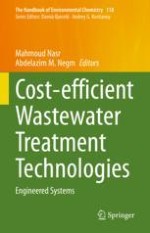2023 | OriginalPaper | Buchkapitel
Prospects and Potential Role of Biological Treatment of Textile Effluent to Restore Water Reservoir
verfasst von : Shristi Ram, Ramalingam Dineshkumar, Imran Pancha, Sandhya Mishra
Erschienen in: Cost-efficient Wastewater Treatment Technologies
Aktivieren Sie unsere intelligente Suche, um passende Fachinhalte oder Patente zu finden.
Wählen Sie Textabschnitte aus um mit Künstlicher Intelligenz passenden Patente zu finden. powered by
Markieren Sie Textabschnitte, um KI-gestützt weitere passende Inhalte zu finden. powered by
